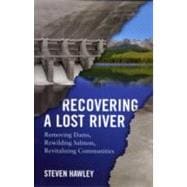
| Prologue | p. xi |
| Redeeming the Dammed | p. 1 |
| What they're Smoking in Alaska this Summer | p. 13 |
| Feed Willy | p. 31 |
| Butte Creek | p. 53 |
| Energy Versus Eternal Delight | p. 73 |
| How the Mighty Were Felled | p. 91 |
| When the Levee Breaks | p. 99 |
| The Fifth H | p. 99 |
| Lies, Dam Lies, and Statistics: The Science of Saving Big Hydro | p. 141 |
| A River Resuscitated | p. 171 |
| The Heart of the Monster | p. 187 |
| Epilogue The River Why Not | p. 219 |
| Afterword | p. 233 |
| Acknowledgments | p. 237 |
| Notes | p. 239 |
| Sources | p. 245 |
| Table of Contents provided by Ingram. All Rights Reserved. |
The New copy of this book will include any supplemental materials advertised. Please check the title of the book to determine if it should include any access cards, study guides, lab manuals, CDs, etc.
The Used, Rental and eBook copies of this book are not guaranteed to include any supplemental materials. Typically, only the book itself is included. This is true even if the title states it includes any access cards, study guides, lab manuals, CDs, etc.